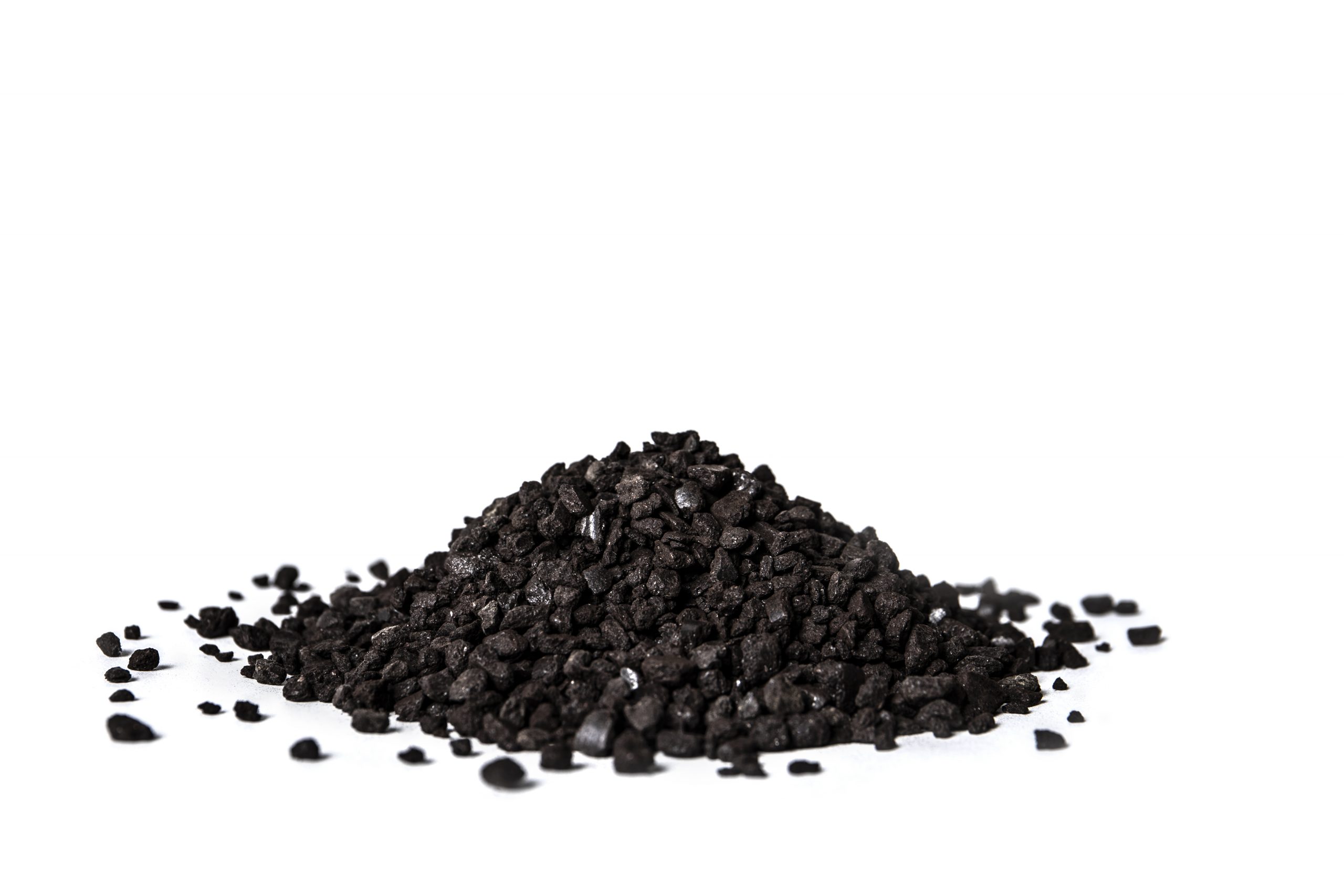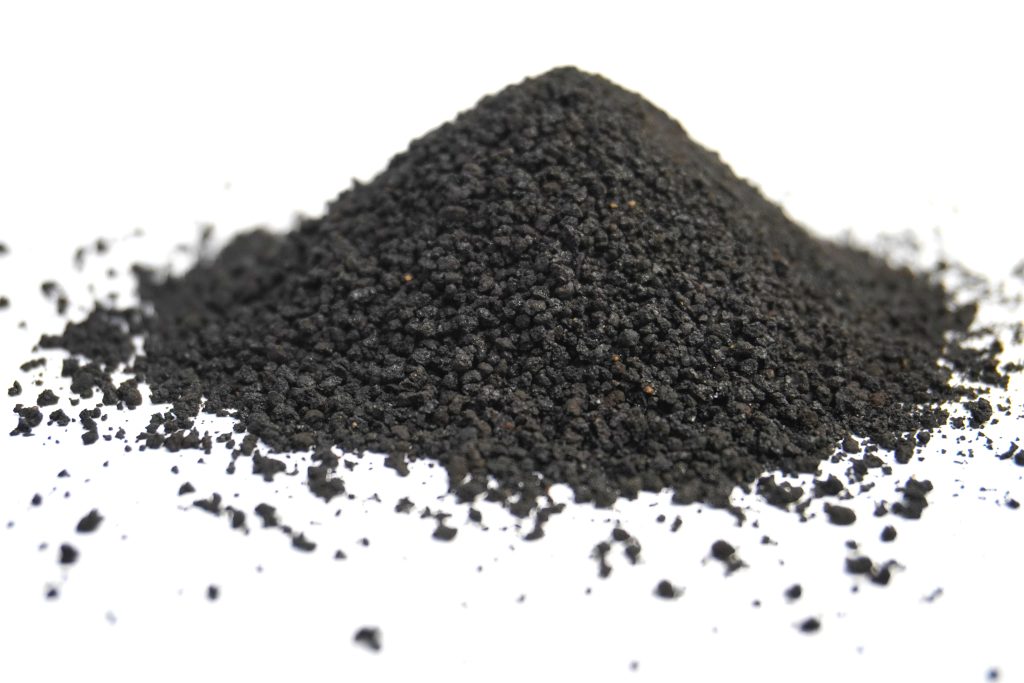Humics – Driving Soil Health
Humic substances are natural organic compounds formed from the breakdown of plant and microbial matter over thousands to millions of years. They’re found in soil, peat, compost, and especially in soft brown coal-like materials such as leonardite and humalite.
What is Humalite?
Humalite is an oxidized coal-like substance. It is a unique deposit formed over millions of years during the decomposition of organic materials in the earth.
Understanding the Difference: Humic Acids vs. Fulvic Acids vs. Humin
Not all humics are created equal, so understanding the difference can make all the difference in your soil health and crop performance.
Humic Acid
Humic acid is the middleweight molecule in the humics family. It plays a crucial role in improving soil structure, increasing both nutrient retention and microbial activity. Due to its larger molecular size, it binds well with minerals and remains in the soil longer, gradually releasing nutrients for plant uptake.
- Best for: Long-term soil conditioning
Fulvic Acid
The fast-acting nutrient carrier
Fulvic acid is the both smallest and the most chemically active fraction of humics. It penetrates plant cells easily and helps chelate and transport nutrients directly into roots and foliage. Because it’s fully water-soluble at all pH levels, it’s perfect for foliar sprays and fertigation systems.
- Best for: Rapid nutrient uptake and bioavailability
Humin
The stable carbon reserve
Humin is the least soluble of the humic trio. It doesn’t dissolve and for the most part stays in the soil for years, acting as a long-term carbon sink and helping with soil structure and moisture retention. While it doesn’t provide immediate benefits like fulvic or humic acids, it’s vital for building resilient soils.
- Best for: Long-term soil carbon and structure
Raw Humalite is great for all agricultural use, also is spreader, floater and air compatible. It further increases soil CEC, can greatly increase water holding capacity. Also improves microbial community in your soil. It is a unique resource to Alberta due to its high Humic acid content, the highest known on Earth.
What Humic Acid Does for Your Soil
Healthy soil starts with a strong foundation—and humics are one of nature’s most powerful soil enhancers. Extracted from ancient organic matter, humic acid works at the root level to transform tired, depleted soils into thriving ecosystems that support both strong and healthy plant growth.
🌱 Improves Soil Structure
Humic acid helps bind soil particles into stable aggregates, improving aeration, water retention, and drainage. Whether your soil is sandy or heavy clay, humic acid balances texture and enhances tilth—making it easier for roots to grow deep and strong.
💧 Increases Water-Holding Capacity
By improving both soil porosity and organic matter content, humic acid helps soils retain moisture longer. That means less water stress for your crops and greater resilience during dry spells.
🧲 Boosts Nutrient Retention and Availability
Humic acid acts like a sponge, holding onto essential nutrients like nitrogen, phosphorus, and potassium and preventing them from leaching away. It also chelates micronutrients, making them more available for plant uptake.
🌾 Stimulates Soil Microbiology
Humic acid boosts beneficial bacteria, fungi, actinomycetes, and indirectly supports a healthy soil food web. Above all, a healthy soil biome is key to plant vitality. Humic acid feeds and stimulates beneficial soil microbes, which in turn help cycle nutrients, suppress disease, and improve overall soil fertility.
🌍 Enhances Soil Carbon Content
As a rich source of stable organic carbon, humic acid contributes to long-term soil health and carbon sequestration, building more resilient soil over time.
Humics help build and stabilize soil organic carbon by:
✔️ Directly adding stable carbon compounds
✔️ Stimulating microbial growth and organic matter formation
✔️ Improving conditions for long-term carbon retention
✔️ Promoting root biomass and carbon input
In Short:
Humic acid transforms the way your soil works—making it more fertile, more resilient, and more productive. Whether you’re farming row crops, managing turf, or growing high value produce, humic acid is a proven way to get more from your ground, naturally.
Humalite Bulk
90% Humic Substances – Colometric Method
The bulk humalite product is great for all agricultural use, also is spreader, floater and air compatible.


Semi Soluble Granules
64% Humic Substances – Colometric Method
A coarse granular humic product with partial solubility, engineered to enhance soil conditioning, nutrient efficiency and plant performance in row crops, horticulture and turf applications, ensuring both immediate and long-term benefits.


Liquid Humic Acid
6% – 24% Humic Substances – Colometric Method
Liquid humic acid products vary in concentration greatly depening on the end use. Lower concentration products are designed for blending with a wide range of liquid fertilizers, fungicides, and herbicides. While higher concentration products are designed to maximize the humic acid content of the product.


Humalite Trials
U of A Applying On Wheat Production & Soil Health (pdf)
2020 Humalite Review & Economic Analysis (pdf)
“Humalite has the ability to bind nutrients in the soil, especially nitrogen, and that is critical”
“By holding the nutrients and releasing them slowly, Humalite enables plants to capture more nitrogen and produce bigger yields,”
Dr. Malinda Thilakarathna Assistant Professor at the U of A


Peace Soil Works is happy to offer financing options through Scotiabank’s Yield More Financing™ program. Scotiabank’s Yield More FinancingTM program is a convenient, easy to access, revolving credit line available right at Peace Soil Works. Scotiabank provides an end-to-end solution designed to support producer requirements for the purchase of crop inputs through the growth cycle, harvest, and final sale of the crop. The program works in tandem with Peace Soil Works to provide an off balance sheet “white label” financing option to form an effective end-to-end solution.
